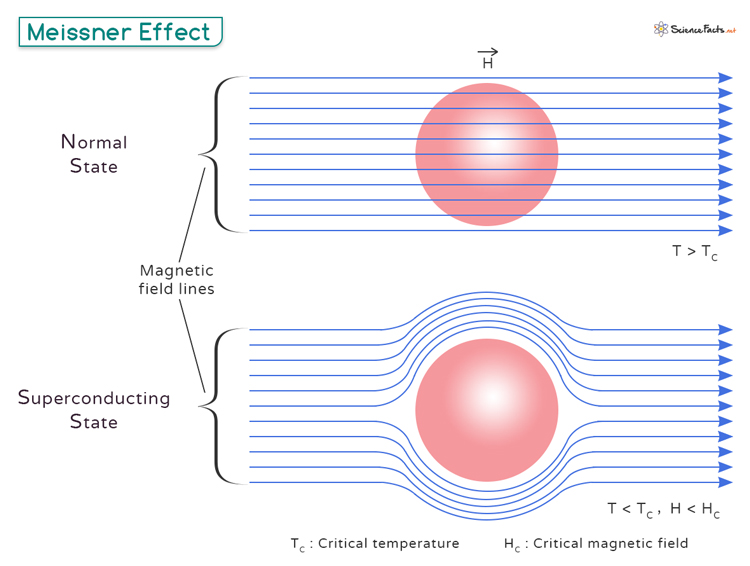German physicists Walther Meissner and Robert Ochsenfeld discovered this phenomenon in 1933, and it is considered one of the defining characteristics of superconductivity.
How Does it Work
Theoretical Explanation
Application
According to the London equations, the magnetic field inside a superconductor decreases rapidly from the surface over a specific distance called the London penetration depth. This distance is very small, typically in the range of tens to hundreds of nanometers (10 – 100 nm). The London penetration depth is important because it tells us how far the magnetic field can penetrate into the superconductor before it is completely expelled. This decrease occurs because persistent supercurrent loops form within the superconductor, creating a magnetic field that opposes the applied field and effectively expels it from the inside. These supercurrents flow without any resistance, which is why they can generate a magnetic field strong enough to counteract and cancel the external magnetic field. As a result, the interior of the superconductor remains free of magnetic fields, demonstrating perfect diamagnetism. In a Maglev system, superconducting materials are used to construct the vehicle, while the track is embedded with powerful magnets. As the superconducting vehicle passes over the magnetized track, the Meissner effect creates a repulsive force between the superconductor and the magnetic field, causing the vehicle to levitate above the track. By controlling the magnetic fields along the track and the orientation of the superconductor, the levitating vehicle can be propelled forward, allowing for efficient and frictionless transportation. Therefore, this technology offers advantages over traditional wheeled transportation methods.
